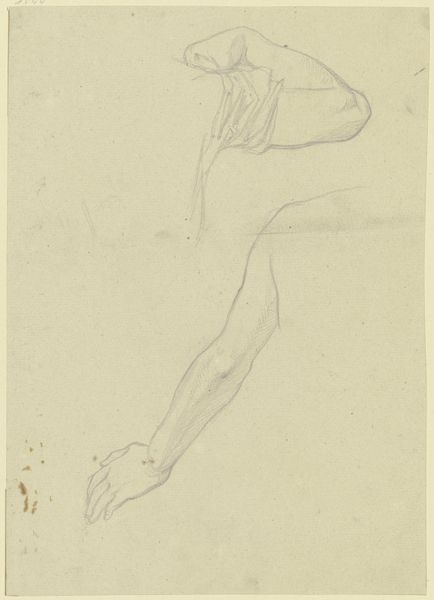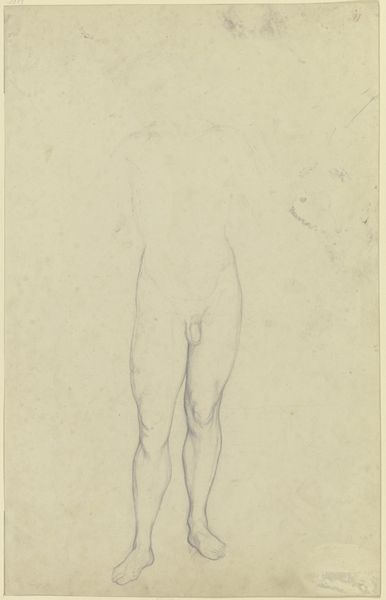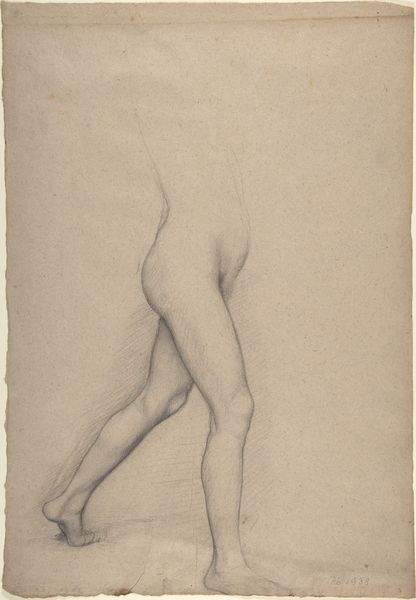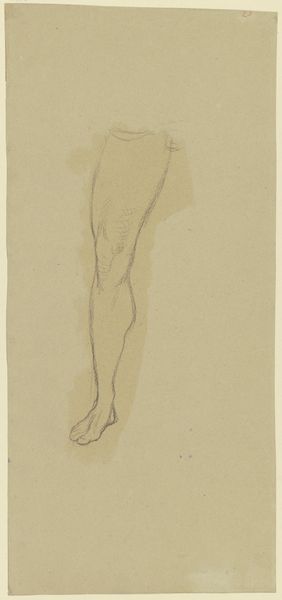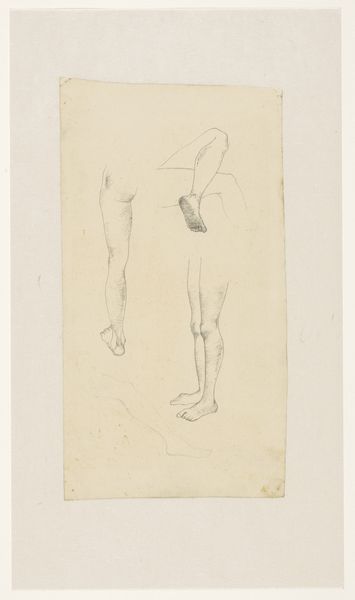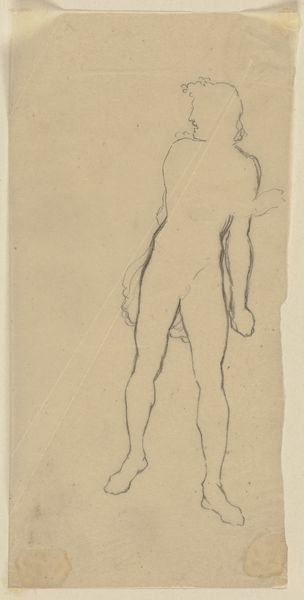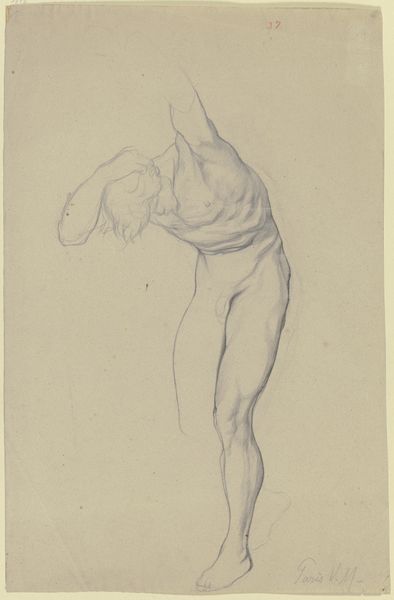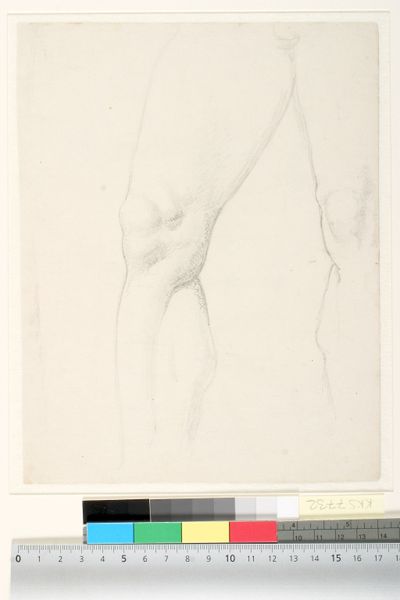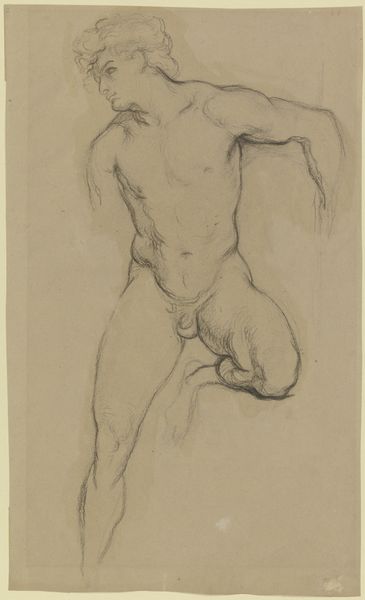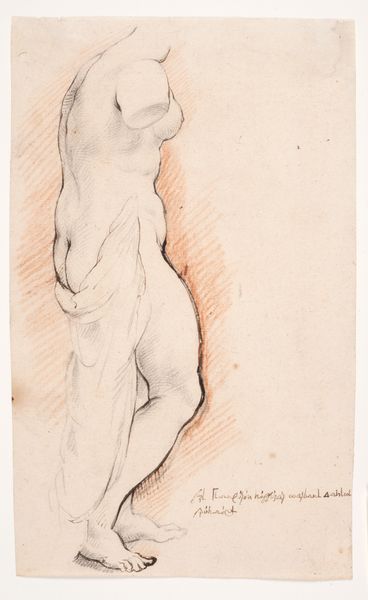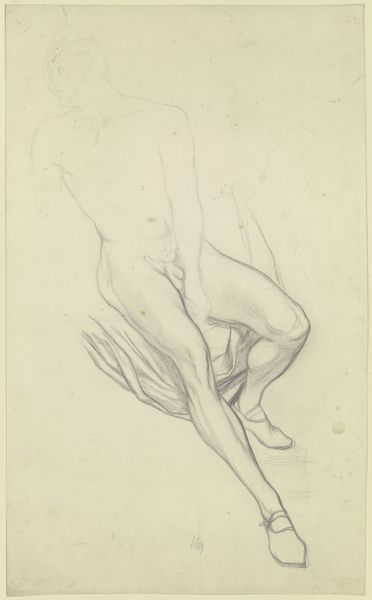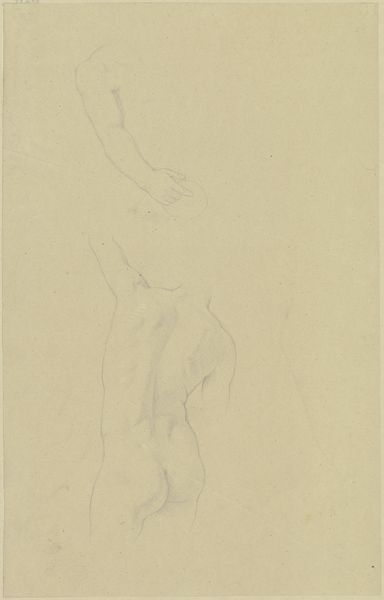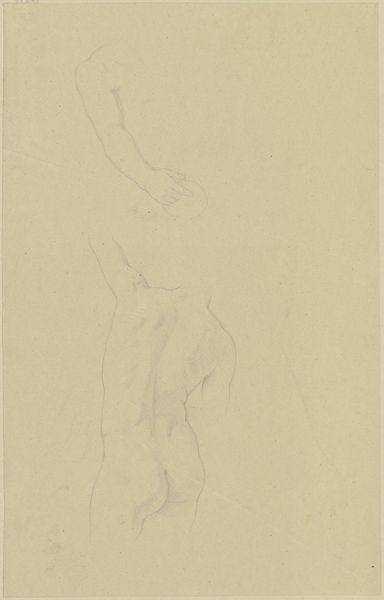
drawing, pencil, chalk
#
portrait
#
pencil drawn
#
drawing
#
16_19th-century
#
pencil drawing
#
pencil
#
chalk
#
academic-art
Copyright: Public Domain
Curator: Let’s spend a moment with "Study sheet_ two arms" from the Städel Museum, attributed to Franz Pforr. It's rendered in pencil and chalk, seemingly a preparatory study. Editor: It's so delicate. The light gray wash of the chalk gives a soft, almost ethereal quality to the arms. You can really see the precision of the line work, but there's a distinct lack of finish to the whole piece. Curator: Precisely. Given Pforr’s context in early 19th-century Academic art, these studies were crucial. Academic art heavily emphasized mastering human anatomy, understanding form, and control of materials through rigorous practice and copying of earlier masterworks. We can assume Pforr may have also been engaged in apprenticeships within artist workshops which dictated the availability of materials to practice drawing techniques. Editor: And the incompleteness speaks to the status of artistic labor then. Pforr isn't presenting us with a finished artwork, but a document of that labor. These preparatory studies are normally unseen, locked away in an artist's studio, and yet the institution now provides the same artistic value. Does this signal changing attitudes toward "labor," which often defines people of certain socioeconomic classes? Curator: It raises some great points, yes. By displaying such works, museums invite viewers to consider the manual and intellectual work involved in art-making, moving beyond just admiring the final "masterpiece." The social conditions in which these studies are produced affect both the outcome and interpretation of these academic techniques. The material conditions inform how the artist conceives the forms as much as the end use of those forms. Editor: Also the choice of the human form as a subject becomes fraught, then. As bodies have historically been divided based on racial and sexual lines. Given the lack of definition within this particular "study," how might these issues emerge? Where are the lines of exclusion inscribed through Pforr's drawing? Curator: I think Pforr's drawing emphasizes a focus on technical proficiency more than social messaging. It could also indicate that Pforr did not get the chance to further define certain features which could reinforce specific cultural identities. However, to your earlier point about labor and value, displaying the artist’s "hand" elevates craft. It allows us to observe technique. Editor: Well, regardless, it makes you consider how works like these—originally made for self-improvement or limited distribution—speak differently in a public collection. Curator: Absolutely. Seeing such studies adds layers to how we engage with art history and acknowledge all kinds of labor and how artists make and materialize art in the real world.
Comments
No comments
Be the first to comment and join the conversation on the ultimate creative platform.
